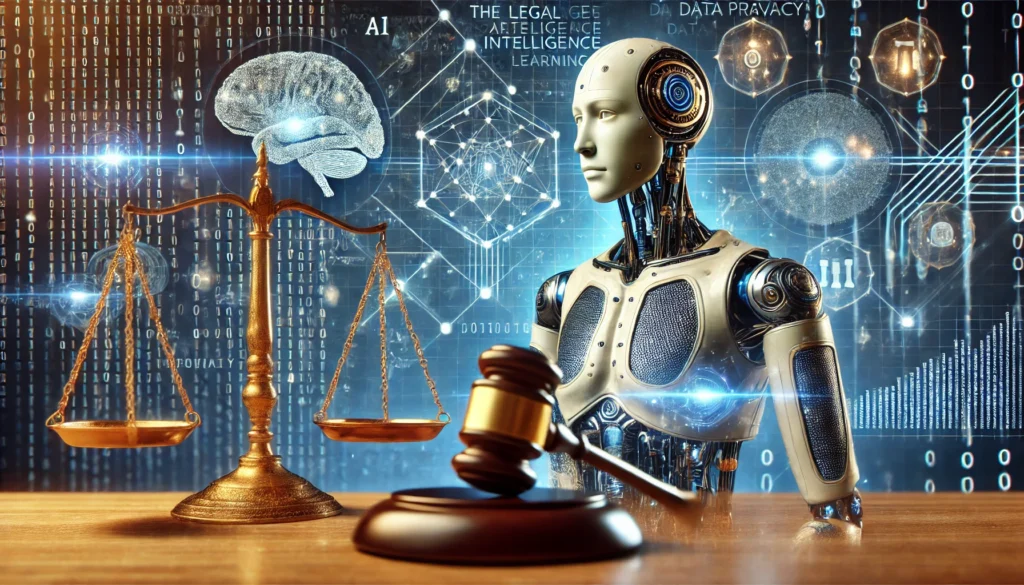Published on: 17th November 2024
Authored by: Gunn Malhotra
GGSIPU
Introduction
The Indian judiciary, with its vast network of courts and complex processes, has long been burdened by challenges such as case backlogs, slow proceedings, and limited access to justice. However, the advent of technology is ushering in a transformative era for the judicial system. As India embraces digital solutions, technology is becoming a pivotal force in enhancing court processes and making justice more accessible to the public. This article explores the significant role of technology in the judiciary, examining its impact on court operations, the challenges it addresses, and its potential for the future.
Historical Context: The Need for Reform
For decades, the Indian judiciary has grappled with several systemic issues. The sheer volume of cases—often reaching millions—has led to extensive delays in the resolution of disputes. In many instances, cases linger for years, contributing to a culture of frustration among litigants. Additionally, the traditional methods of filing and managing cases, predominantly paper-based, have been cumbersome and prone to errors.
Recognizing the urgent need for reform, the Indian government and judiciary have initiated various measures to leverage technology. The aim is not only to streamline court processes but also to ensure that justice is delivered efficiently and equitably.
Key Technological Initiatives in the Indian Judiciary
1. E-Courts Project
One of the most significant initiatives in this digital transformation is the E-Courts Project, launched by the Government of India in 2013. This project aims to integrate information technology across all levels of the judiciary, enhancing case management and improving access to justice. The E-Courts Project includes features such as:
- E-Filing: Litigants can file petitions and documents electronically, significantly reducing the time and effort involved in the filing process. This system also allows for better tracking of case status.
- Case Management System: Courts can manage case lists more efficiently, helping to prioritize urgent matters and reduce delays.
- Virtual Hearings: The COVID-19 pandemic accelerated the adoption of virtual hearings, allowing judges, lawyers, and litigants to participate in proceedings from remote locations. This has been particularly beneficial for individuals in rural areas, who may find it challenging to travel to courts.
2. Online Access to Case Information
Transparency is a cornerstone of a fair judicial system. Technology has enabled greater access to case information, allowing the public to view court schedules, case statuses, and judgments online. Many high courts and the Supreme Court of India have established websites where users can easily access this information. This increased transparency fosters trust in the judiciary and empowers litigants to stay informed about their cases.
3. Digital Legal Aid Services
The introduction of digital legal aid services is another crucial development. Legal aid clinics and organizations are now utilizing technology to provide information and support to marginalized communities. Online platforms allow individuals to seek legal advice, access resources, and connect with lawyers, making legal assistance more accessible than ever before.
4. Artificial Intelligence and Predictive Analytics
Emerging technologies such as artificial intelligence (AI) and predictive analytics are beginning to play a role in the judicial system. AI can assist in legal research, analyzing vast amounts of case law to provide relevant precedents and insights. Additionally, predictive analytics can help assess the likelihood of case outcomes based on historical data, aiding lawyers and judges in making informed decisions.
5. Blockchain Technology
Blockchain technology holds promise for maintaining secure and tamper-proof records of legal documents. By providing a decentralized and transparent ledger, blockchain can enhance the integrity of legal records, making it difficult for any party to alter information without detection. This could significantly reduce fraud in the legal process.
Enhancing Access to Justice
1. Bridging the Urban-Rural Divide
One of the most significant advantages of technology in the judiciary is its potential to bridge the urban-rural divide. Many individuals in rural areas face barriers when accessing legal services, including geographical distance and lack of awareness. Technology mitigates these challenges by providing remote access to legal resources and services.
Virtual hearings, for instance, have made it possible for rural litigants to participate in court proceedings without the need to travel long distances. This not only saves time and money but also encourages greater participation in the judicial process.
2. Empowering Litigants
Technology empowers litigants by providing them with the tools and information they need to navigate the legal system. Online access to case information and resources allows individuals to understand their rights and responsibilities better. Furthermore, digital legal aid platforms enable individuals to seek guidance and support, which is especially beneficial for those who cannot afford legal representation.
3. Reducing Delays and Backlogs
By streamlining court processes and enhancing efficiency, technology plays a crucial role in reducing delays and backlogs. E-filing and case management systems enable courts to process cases more swiftly, allowing judges to focus on delivering timely justice. The integration of virtual hearings has also contributed to expediting proceedings, as it eliminates the need for physical attendance.
Challenges and Concerns
While the integration of technology into the judiciary offers numerous benefits, it is not without challenges. Some of the key concerns include:
1. Digital Divide
Despite the advancements in technology, a significant digital divide persists in India. Many individuals, particularly in rural areas, lack access to the internet and digital devices. This disparity can hinder the effectiveness of technological initiatives and further marginalize vulnerable populations. To address this issue, efforts must be made to improve digital infrastructure and promote digital literacy.
2. Data Privacy and Security
The increasing reliance on technology raises concerns about data privacy and security. Sensitive legal information is often stored online, making it vulnerable to cyberattacks and unauthorized access. The judiciary must prioritize data protection measures to safeguard the privacy of litigants and maintain the integrity of legal processes.
3. Resistance to Change
The traditional nature of the judiciary may lead to resistance to adopting new technologies. Judges and court staff may require training and support to effectively navigate digital systems. Building a culture of openness and adaptability within the judiciary is crucial for the successful implementation of technological initiatives.
Future Prospects
As technology continues to evolve, its role in the judiciary is likely to expand further. The following trends and developments may shape the future of the judicial system in India:
1. Enhanced Use of Artificial Intelligence
As AI technology matures, its application in the judiciary could become more sophisticated. AI could assist in drafting legal documents, predicting case outcomes, and even providing recommendations for sentencing. While there are ethical considerations to address, the potential for AI to enhance efficiency and accuracy is significant.
2. Greater Emphasis on Cybersecurity
With the increasing digitization of legal processes, cybersecurity will become a top priority. The judiciary will need to invest in robust security measures to protect sensitive information and ensure that the integrity of legal proceedings is maintained.
3. Collaborative Platforms for Legal Services
The future may see the emergence of collaborative platforms that connect litigants with legal professionals, allowing for seamless communication and support. Such platforms could facilitate the sharing of resources, knowledge, and expertise, ultimately improving access to justice.
4. Continuous Training and Education
To keep pace with technological advancements, continuous training and education for judges, lawyers, and court staff will be essential. Ongoing professional development programs can help legal professionals adapt to new tools and processes, ensuring that they remain effective in their roles.
Conclusion
The role of technology in the Indian judiciary is increasingly becoming a transformative force, reshaping court processes and enhancing access to justice. Initiatives such as the E-Courts Project, online access to case information, and digital legal aid services are making significant strides in addressing the challenges of the traditional judicial system. By leveraging technology, the judiciary is not only streamlining operations but also empowering litigants and fostering greater transparency.
However, challenges such as the digital divide, data privacy concerns, and resistance to change must be addressed to ensure that the benefits of technology are realized by all segments of society. As India continues to embrace digital solutions, the future of the judiciary holds immense promise, paving the way for a more efficient, accessible, and equitable legal system.
In summary, technology is not merely an accessory to the judiciary; it is becoming an integral part of its evolution. By harnessing the power of technology, India can work towards a judicial system that delivers justice effectively and equitably, meeting the needs of a diverse and dynamic population.



